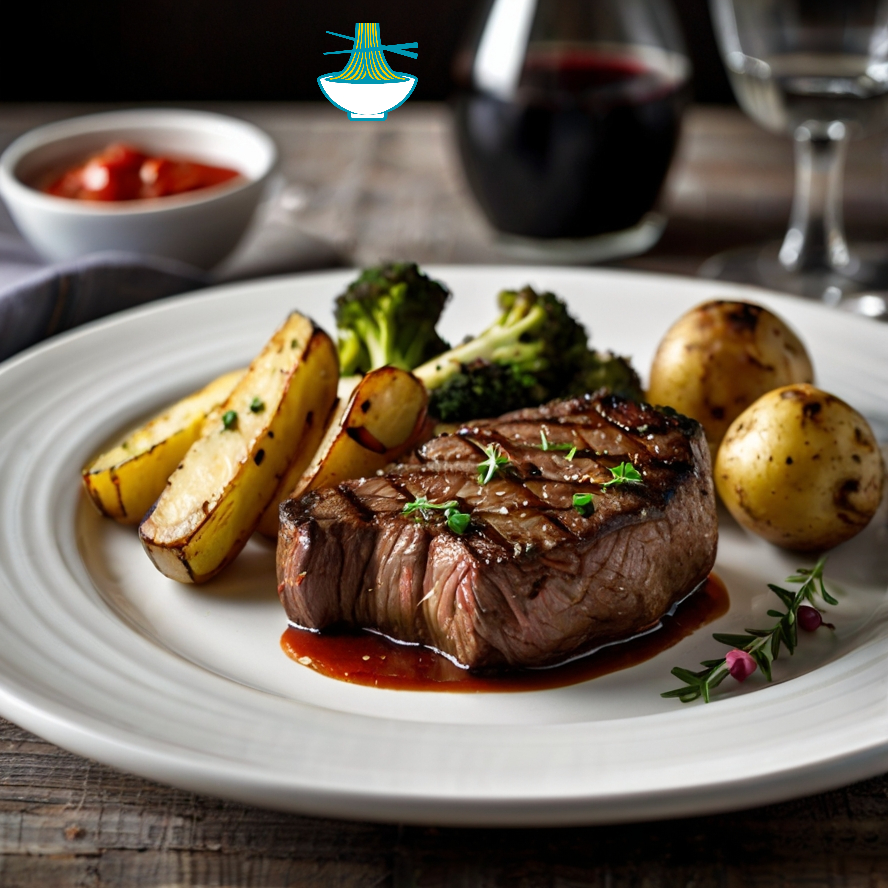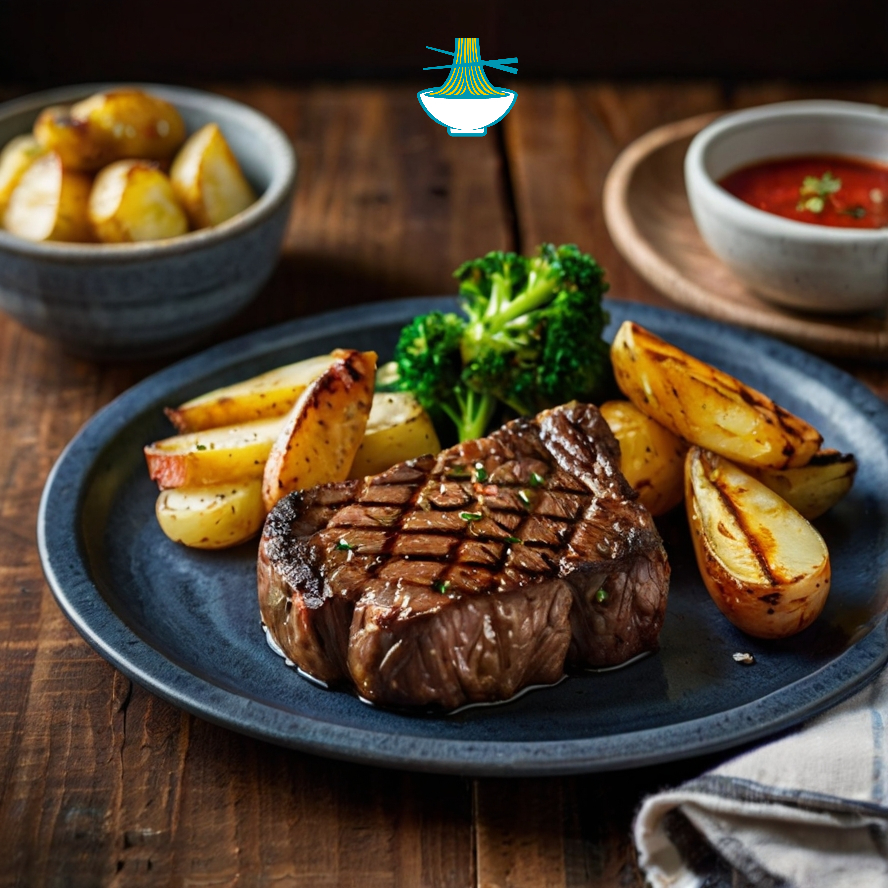The steak recipe typically involves grilling or pan-searing a beef steak until it's cooked to the desired level of doneness. It's often served with classic sides like mashed potatoes, vegetables such as green beans or broccoli, and a flavorful sauce like peppercorn or mushroom sauce.
Steak has a rich history dating back to ancient times when meat was cooked over open flames. Over the centuries, different cultures developed their methods of preparing and seasoning steak, leading to a wide variety of steak recipes worldwide. In modern times, steak has become a popular dish in restaurants and home kitchens, enjoyed for its juicy and tender texture, especially when cooked to perfection.
Ingredients:
- 1 beef steak (preferably ribeye, sirloin, or filet mignon)
- Salt and pepper, to taste
- Olive oil or butter, for cooking
- Optional: minced garlic, fresh herbs like thyme or rosemary
Method of Preparation:
1. Preheat your grill or a pan over medium-high heat.
2. Season both sides of the steak generously with salt and pepper.
3. If desired, rub minced garlic or fresh herbs onto the steak for added flavor.
4. Drizzle olive oil or melt butter in the pan/grill.
5. Place the steak on the hot surface and cook for 3-4 minutes per side for medium-rare (adjust cooking time based on desired doneness).
6. Remove the steak from the heat and let it rest for a few minutes before slicing.
7. Serve the steak with mashed potatoes, steamed vegetables, and your favorite sauce on the side.
Nutrition Value:
1. Beef Steak (Ribeye, Sirloin, or Filet Mignon):
- Calories: Approximately 200-300 calories per 100 grams, depending on the cut and fat content.
- Carbohydrates: Negligible, as beef is primarily a protein and fat source.
- Protein: High, with around 20-30 grams per 100 grams of meat.
- Fat: Varies based on the cut; ribeye tends to be fattier, while filet mignon is leaner.
- Sodium: Low naturally, but can increase depending on seasoning and cooking methods.
- Cholesterol: Moderate to high, especially in cuts with more marbling.
- Vitamins: Contains B vitamins (B12, B6, niacin) and small amounts of vitamin E.
- Minerals: Rich in iron, zinc, selenium, and phosphorus.
- Nutritional Benefit: Beef provides essential amino acids for muscle growth and repair, iron for oxygen transport, and various minerals vital for overall health.
2. Salt and Pepper:
- Calories: Negligible, as they are used in small amounts for seasoning.
- Carbohydrates: None.
- Protein: None.
- Fat: None.
- Sodium: Depending on the amount used, can contribute to sodium intake.
- Cholesterol: None.
- Vitamins: None.
- Minerals: Salt provides sodium, essential for fluid balance and nerve function.
- Nutritional Benefit: Enhances flavor, but excessive salt intake can be detrimental to health, so use in moderation.
3. Olive Oil or Butter (for cooking):
- Calories: Around 100-120 calories per tablespoon.
- Carbohydrates: None.
- Protein: None.
- Fat: High in monounsaturated fats (olive oil) or saturated fats (butter).
- Sodium: Minimal unless salted butter is used.
- Cholesterol: Butter contains cholesterol; olive oil does not.
- Vitamins: Olive oil contains vitamin E; butter has small amounts of vitamins A and D.
- Minerals: None significant.
- Nutritional Benefit: Provides healthy fats (in olive oil) or flavor (in butter), but moderation is key due to calorie density.
4. Optional: Minced Garlic, Fresh Herbs (Thyme or Rosemary):
- Calories: Negligible for herbs and around 5 calories per clove of garlic.
- Carbohydrates: Low in herbs; garlic contains some carbohydrates.
- Protein: Minimal.
- Fat: Very low.
- Sodium: Minimal.
- Cholesterol: None.
- Vitamins: Rich in vitamins C (herbs), B6 (garlic), and antioxidants.
- Minerals: Herbs like thyme and rosemary provide small amounts of iron, calcium, and magnesium.
- Nutritional Benefit: Adds flavor and antioxidants, with garlic offering potential immune and heart health benefits. Herbs contribute micronutrients and phytochemicals.


Comments